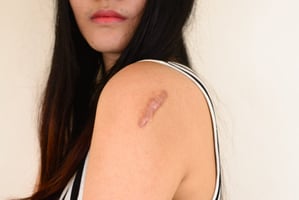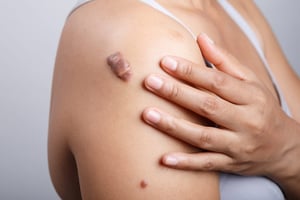In the bustling city of Dubai, where innovation meets excellence in healthcare, the realm of pulsed...
Cost-Effective Keloid Removal Techniques: Exploring Your Options
Keloids, those raised scars that can develop after an injury or surgery, can be more than just a cosmetic concern; they can also cause discomfort and affect self-esteem. Fortunately, there are cost-effective keloid removal techniques available that can help individuals manage and reduce the appearance of keloids without breaking the bank. In this comprehensive guide, we'll explore various options for Keloid Treatment in Dubai that are both effective and budget-friendly.

Understanding Keloids: What Are They?
Before delving into keloid removal cost, it's crucial to understand what keloids are and how they differ from regular scars. Keloids are an overgrowth of scar tissue that forms at the site of a wound, injury, or surgical incision. Unlike normal scars, which typically fade over time, keloids can grow larger than the original wound and may continue to expand even after the wound has healed.
Causes of Keloids
Several factors contribute to the development of keloids, including:
- Genetics: Some individuals are more predisposed to keloid formation due to their genetic makeup.
- Injury or Surgery: Keloids often develop in response to skin trauma, such as cuts, burns, acne, or surgical procedures.
- Skin Type: People with darker skin tones are more prone to keloid formation.
- Hormonal Changes: Pregnancy or puberty can trigger the formation of keloids in susceptible individuals.
Non-Invasive Keloid Removal Techniques
For those seeking cost-effective keloid removal options, non-invasive techniques offer a safer and more affordable alternative to surgical procedures. These methods focus on reducing the size and appearance of keloids without the need for incisions or anesthesia.
Topical Treatments
Topical treatments, such as silicone gel sheets, silicone gel creams, and corticosteroid creams, are commonly used to flatten and soften keloids. These products work by hydrating the skin and reducing inflammation, ultimately improving the appearance of keloid scars over time.
Cryotherapy
Cryotherapy involves freezing the keloid with liquid nitrogen to destroy the excess scar tissue. While this technique may cause some discomfort during the procedure, it is generally well-tolerated and can be performed in a dermatologist's office.
Laser Therapy
Laser therapy uses focused beams of light to target and break down the collagen fibers that make up the keloid scar. This helps to reduce the size and redness of the scar, resulting in smoother and more even-looking skin.
Surgical Keloid Removal Techniques
In cases where non-invasive treatments are ineffective, surgical removal may be necessary to address large or persistent keloids. While surgical procedures tend to be more expensive than non-invasive options, there are still cost-effective approaches available.
Excision
Excision involves cutting out the keloid and stitching the surrounding skin back together. This technique is often combined with other treatments, such as corticosteroid injections or radiation therapy, to prevent the keloid from returning.
Cryosurgery
Cryosurgery, also known as cold surgery, uses extreme cold to freeze and destroy the keloid tissue. This technique is particularly useful for small keloids and can be performed in a dermatologist's office with local anesthesia.
Radiation Therapy
Radiation therapy involves using high-energy radiation beams to target and shrink the keloid tissue. While this method is effective in preventing keloid recurrence, it may require multiple sessions and can be costly.
Home Remedies for Keloid Removal
In addition to professional treatments, there are several cost-effective home remedies that individuals can try to reduce the appearance of keloids:
- Apple Cider Vinegar: Applying diluted apple cider vinegar to the keloid may help soften and flatten the scar over time.
- Lemon Juice: The acidic properties of lemon juice can lighten dark keloid scars and improve their overall appearance.
- Onion Extract: Onion extract creams have been shown to reduce the size and thickness of keloid scars when applied regularly.
Conclusion
Dealing with keloid scars can be challenging, but there are numerous cost-effective removal techniques available to help individuals manage their condition. Whether opting for non-invasive treatments like topical creams and laser therapy or considering surgical options such as excision and radiation therapy, it's essential to explore all available options and consult with a dermatologist or healthcare provider to determine the best course of action. By understanding the causes of keloids and exploring various removal techniques, individuals can take proactive steps towards achieving smoother, scar-free skin without breaking the bank.
Read More About: keloid scar injection in Dubai


